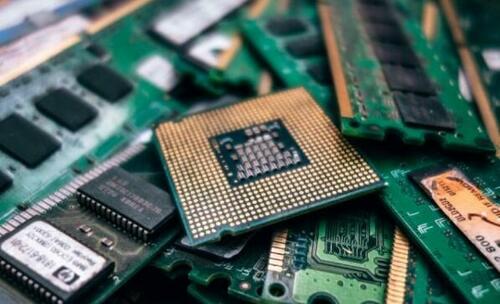
The proof is in the pudding, as they say.
Despite claims of a Chinese technological breakthrough in chipmaking, a teardown of Huawei's newest laptop reveals a chip made in Taiwan - not China - by Taiwan Semiconductor Manufacturing, according to a new Bloomberg report.
The teardown stands at odds with the claim that Huawei’s chipmaking partner, SMIC, based on the Chinese mainland, had achieved potential advancements in fabrication technique.
According to Bloomberg, the world noticed when in August Huawei's launch of a smartphone featuring a 7nm processor from Shanghai's SMIC made headlines in the US and China.
Analysis by a Canadian research group for Bloomberg News revealed that the chip was hot on the trail of the current industry standard, insinuating that US trade restrictions may not be worker. The advancement was heralded in China's tech community.
But the recent teardown of Huawei's Qingyun L540 notebook revealed a 5nm chip - a Kirin 9006C processor fabricated via TSMC’s 5nm method - not an SMIC chip.
In 2023, Huawei's Mate 60 smartphone, featuring advanced technology, solidified its role as a leader in China's push for tech independence. This led to significant sales, helping Huawei surpass $100 billion in revenue and challenging Apple's market dominance.
The Shenzhen-based company, previously relying on TSMC for advanced 5nm chips, has since focused on developing and hoarding semiconductors, especially after heightened US trade restrictions and being listed on Washington's Entity List since 2019.
Bloomberg reported that Huawei has invested heavily in chip research and built a domestic supply network, partly government-supported. Its latest product, the L540 laptop, aligns with Beijing's directive to replace foreign tech in critical areas, emphasizing data security and meeting China's stringent requirements.
This move is also part of Huawei's broader strategy to expand into mobile and computing devices since 2016, the report says.
The proof is in the pudding, as they say.
Despite claims of a Chinese technological breakthrough in chipmaking, a teardown of Huawei’s newest laptop reveals a chip made in Taiwan – not China – by Taiwan Semiconductor Manufacturing, according to a new Bloomberg report.
The teardown stands at odds with the claim that Huawei’s chipmaking partner, SMIC, based on the Chinese mainland, had achieved potential advancements in fabrication technique.
According to Bloomberg, the world noticed when in August Huawei’s launch of a smartphone featuring a 7nm processor from Shanghai’s SMIC made headlines in the US and China.
Analysis by a Canadian research group for Bloomberg News revealed that the chip was hot on the trail of the current industry standard, insinuating that US trade restrictions may not be worker. The advancement was heralded in China’s tech community.
But the recent teardown of Huawei’s Qingyun L540 notebook revealed a 5nm chip – a Kirin 9006C processor fabricated via TSMC’s 5nm method – not an SMIC chip.
In 2023, Huawei’s Mate 60 smartphone, featuring advanced technology, solidified its role as a leader in China’s push for tech independence. This led to significant sales, helping Huawei surpass $100 billion in revenue and challenging Apple’s market dominance.
The Shenzhen-based company, previously relying on TSMC for advanced 5nm chips, has since focused on developing and hoarding semiconductors, especially after heightened US trade restrictions and being listed on Washington’s Entity List since 2019.
Bloomberg reported that Huawei has invested heavily in chip research and built a domestic supply network, partly government-supported. Its latest product, the L540 laptop, aligns with Beijing’s directive to replace foreign tech in critical areas, emphasizing data security and meeting China’s stringent requirements.
This move is also part of Huawei’s broader strategy to expand into mobile and computing devices since 2016, the report says.
Loading…





